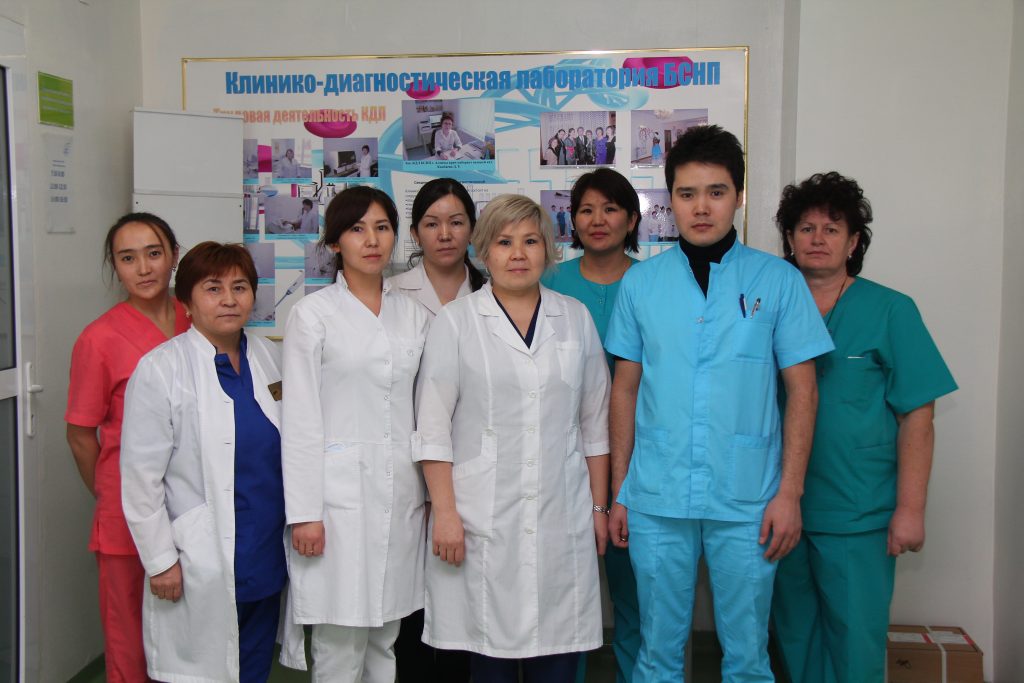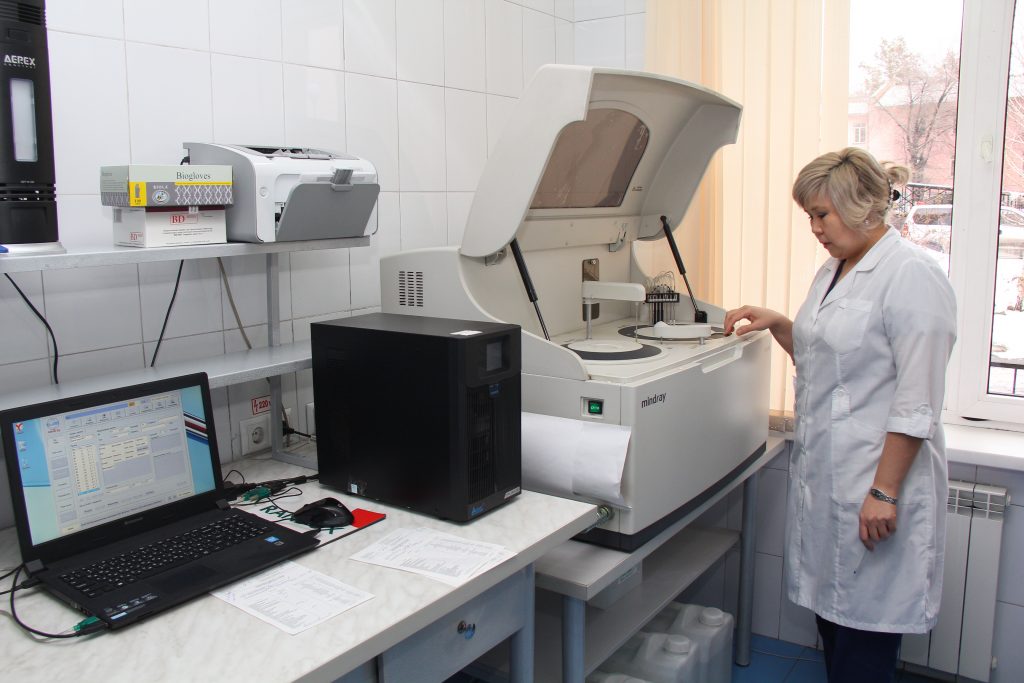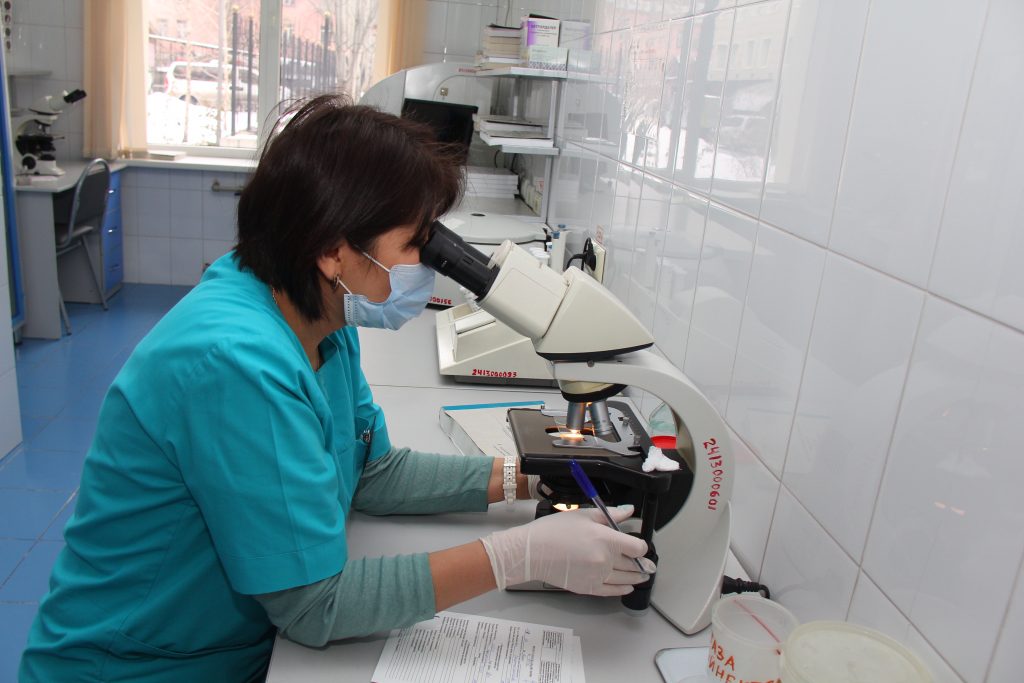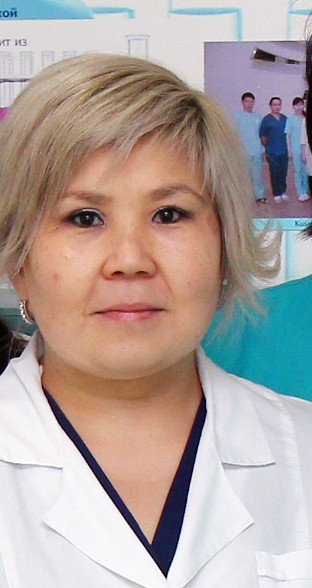The clinical diagnostic laboratory consists of 4 structural divisions: hematological, all-clinical, biochemical and toxicological.
Feature of laboratory diagnostics is versatility as laboratory researches are applied in all fields of medicine. A task of clinical diagnostic laboratory – to help the doctor-clinical physician with diagnosis, treatment and the forecast of a disease.
The clinical diagnostic laboratory carries out the following types of analyses:
- IFA (hepatitises B, C), biochemistry (common protein, albumin, SRB, urea, creatinine, glucose, ALT, nuclear heating plant, common bilirubin, amylase and others);
- all-clinical: bulk analysis of urine, Nechiporenko and Zimnitsky’s test, test of sugar, protein in daily urine, bulk analysis of developed blood, bulk analysis of a sputum, gynecologic dabs, urological dabs, Reberg’s test, cerebrospinal fluid (liquor), etc.;
- toxicological: qualitative and quantitative test of alcohol in blood and urine, a hemolysis of blood and urine, definition of tablets (burdens pases, Dimedrolum, Analginum, Paracetamolum, фурацемид and others), definition of opiates (cocaine, marijuana, Morphinum, heroin and others);
- hematological: definition of an ESR and hemoglobin, calculation of quantity and formulated elements of blood and leykoformula, calculation of reticulocytes and thrombocytes


The manager of clinical diagnostic laboratory is Zhunusova Lyazzat Elzatovna


